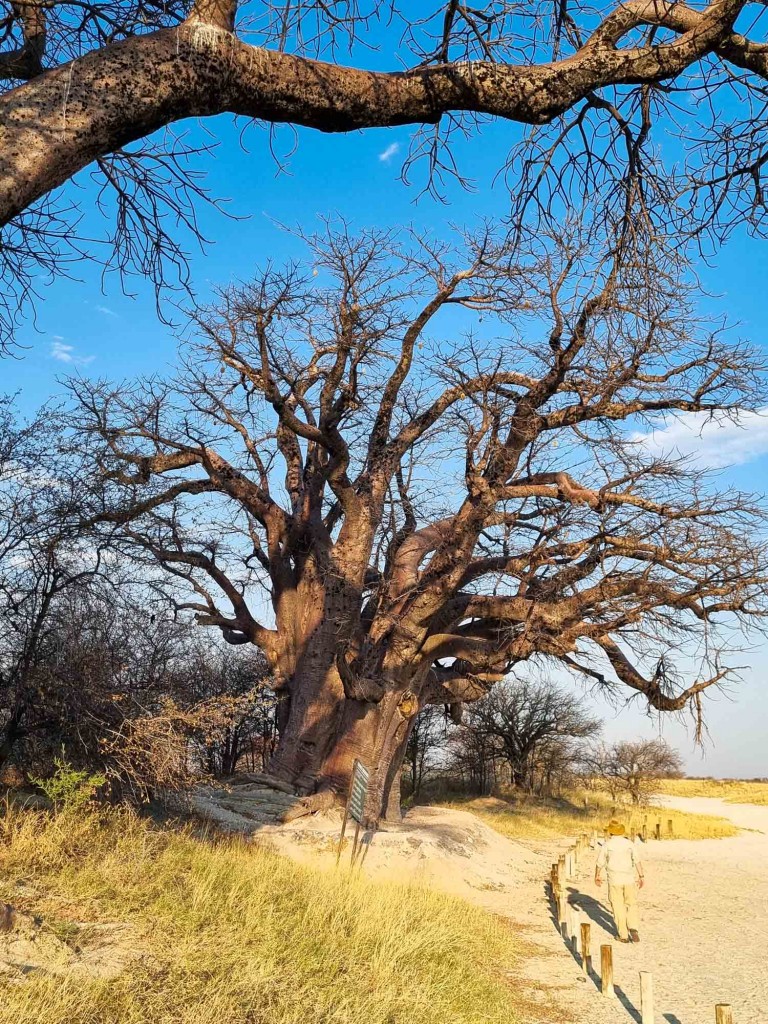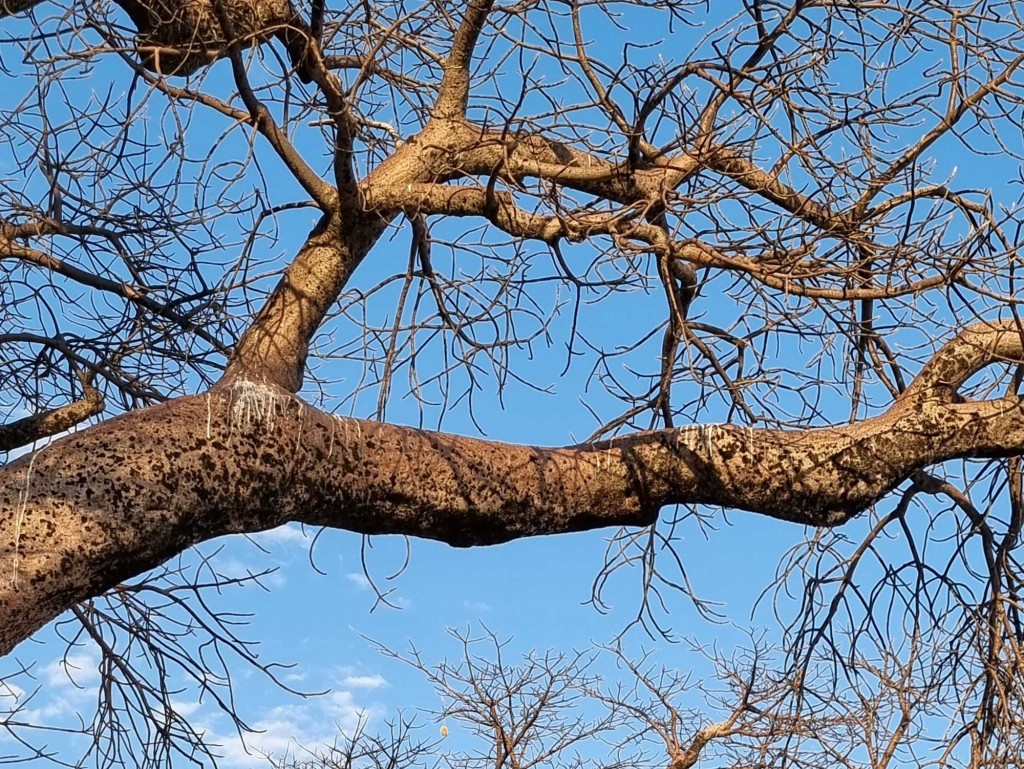Are Baine’s Baobabs in Botswana dying?
I have been lucky to visit these amazing trees many times in the last 10 years or so. To me, it appears as if they are in bad shape. The furthest of them all appears to be leaning over a bit and may fall completely over in the next while. The area was stabilized a couple of years back after the ground around it was washing away. When I arrived a few days back I couldn’t help but notice the baobab leaning way more than before.

Image 1: Furthest of Baines’ Baobabs appears to be leaning to the south.
There is also what appears to be black mould on the bark of some of the trees – and while it is hard to be certain, it does seem to be more prolific in recent years. There is a fungi that is associated with these black moulds that some suggest is harmful to the trees health. A publication by Cruywagen et al suggests while the fungus is found to negatively impact the infected trees causing dieback that it doesn’t kill them (Click here). However, there are definitely reasons for concern and more studies should be conducted as many of the ancient Baobabs in Botswana and beyond have almost mysteriously died in the last decade or so.
In fact, an article by Reuters (Click here) suggests the risks are also to the many humans whose livelihoods depend on them to varying degrees. While elephants have no doubt had an impact on baobabs, some of them such as the famous Chapman’s Boabab had no elephant damage and have suddenly died. Other monster trees like the Simbira Baobab on northern Chief’s Island in the Okavango (close to Mombo) have also recently died. While that one had minimal elephant damage it almost inexplicably fell over one day. It is possible that a combination of factors are causing their deaths and in areas of high elephant concentrations I have seen many of the great baobabs (500-1000 years +) die during my tenure in Botswana.
There is much discussion that periods of extreme and erratic weather such as long as prolonged drought may be providing the conditions for the mould to thrive on the weakened trees. This is the only species of Baobab native to mainland Africa and while Adansonia digitata grows widely across the continent and is not endangered as a species, it is concerning that some of the most beautiful land marks in the otherwise stark and arid landscape of Botswana are dying around us!

Image 2: Black mould on the underside of the Baobabs





